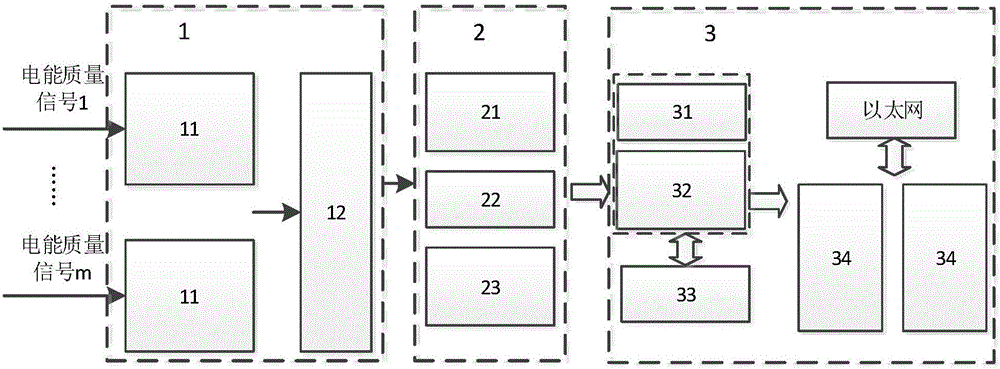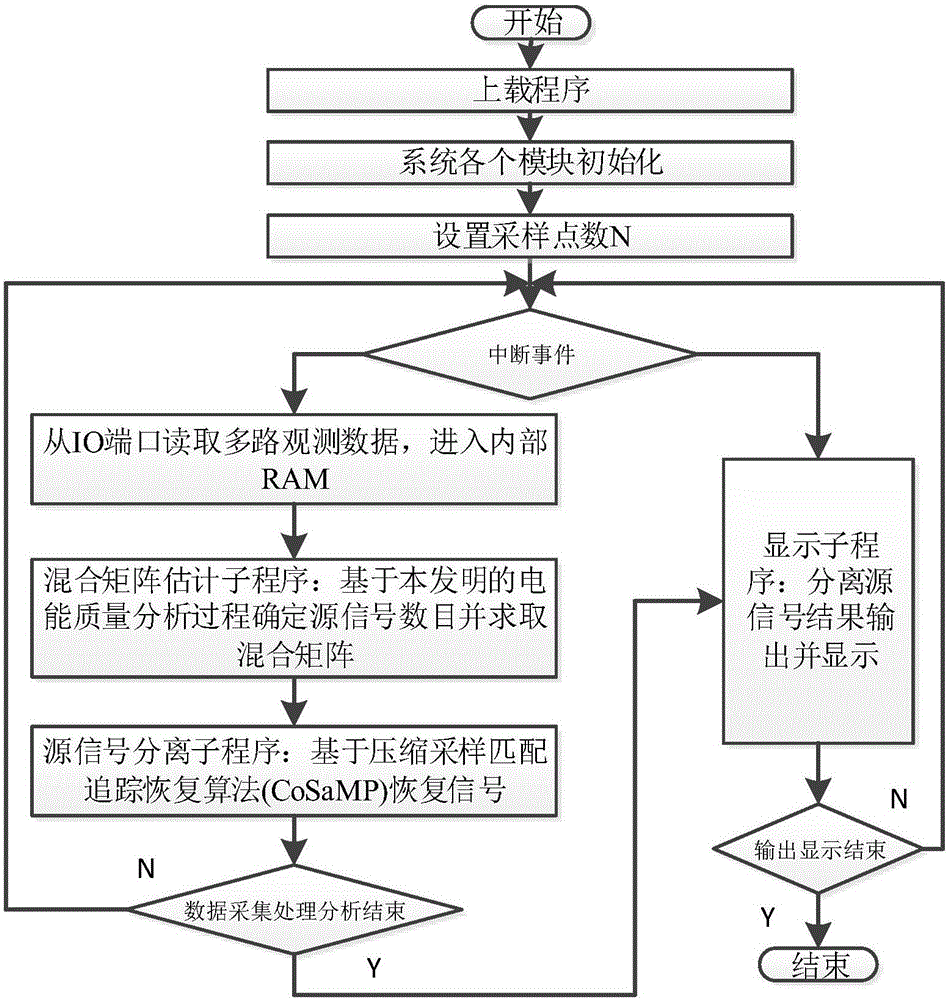Power quality signal detection device based on compressed sensing blind signal separation technology
A technology of power quality and compressed sensing, applied in measuring devices, measuring electrical variables, measuring electricity, etc., can solve the problems of high storage and transmission pressure at the sampling end, high signal sampling frequency, etc., and achieve the effect of reducing the pressure of mass storage and data transmission
- Summary
- Abstract
- Description
- Claims
- Application Information
AI Technical Summary
Problems solved by technology
Method used
Image
Examples
Embodiment 1
[0050] The embodiment of the present invention aims at the key problems of the continuous growth of data volume and increasingly serious power quality pollution in the power system, the separation of power quality signals and the collection and transmission of massive data, and forms a power quality signal detection device based on compressed sensing blind source signal separation technology, see figure 1 , figure 2 and image 3 , the core of this device is to implement a self-proposed compressed sensing blind source signal separation detection method in the DSP+ARM calculation and analysis unit.
[0051] The separation detection method adopts a two-step method for m-channel power quality observation signals to realize blind source separation of power quality signals. In the first step, on the basis of estimating the number of power quality source signals, linear clustering is used to estimate the mixing matrix; in the second step, the compressed sensing recovery method is u...
Embodiment 2
[0054] The structure of a power quality signal detection device based on compressed sensing blind source signal separation technology in Embodiment 1 will be described in detail below in conjunction with specific drawings. The device diagram is as follows figure 1 shown.
[0055] The device includes: a signal conditioning module 1, a signal sampling module 2, and a signal processing and analysis module 3, wherein the signal conditioning module 1 uses a voltage transformer / current transformer 11 to connect to the grid, and the power quality signal in the power system Connect to the device, and filter out the interfering high-frequency signal through the anti-aliasing low-pass filter 12;
[0056] The signal sampling module 2 includes: a multi-channel synchronous sampling A / D converter 21 , a sampling interval control logic unit 22 , and a frequency multiplication phase-locked synchronization control unit 23 .
[0057] Signal processing analysis module 3 includes: ARM+DSP core c...
Embodiment 3
[0071] The hardware implementation diagram of the compressed sensing blind source signal separation detection method in the ARM+DSP calculation and analysis module is shown in the figure image 3 shown. The m-channel observation signal H(t) is filtered out by a 2500Hz low-pass filter to filter out high-frequency signals to reduce the impact of high-frequency signals on system detection and ensure the detection accuracy of the device. After H(t) is sampled by A / D to obtain the sample sequence [h 1 (1)... h 1 (k)...h m (1)... h m (k)], and enter the DSP chip in the form of digital input, through the internal separation detection algorithm processing of the DSP chip, according to the Fourier transform to the frequency domain, form a spectrum scatter diagram, determine the number n of source signals according to the straight line direction, And use the clustering method to estimate the mixing matrix, and finally use the CoSaMP algorithm to reconstruct each source signal.
[0...
PUM
 Login to View More
Login to View More Abstract
Description
Claims
Application Information
 Login to View More
Login to View More - R&D
- Intellectual Property
- Life Sciences
- Materials
- Tech Scout
- Unparalleled Data Quality
- Higher Quality Content
- 60% Fewer Hallucinations
Browse by: Latest US Patents, China's latest patents, Technical Efficacy Thesaurus, Application Domain, Technology Topic, Popular Technical Reports.
© 2025 PatSnap. All rights reserved.Legal|Privacy policy|Modern Slavery Act Transparency Statement|Sitemap|About US| Contact US: help@patsnap.com



